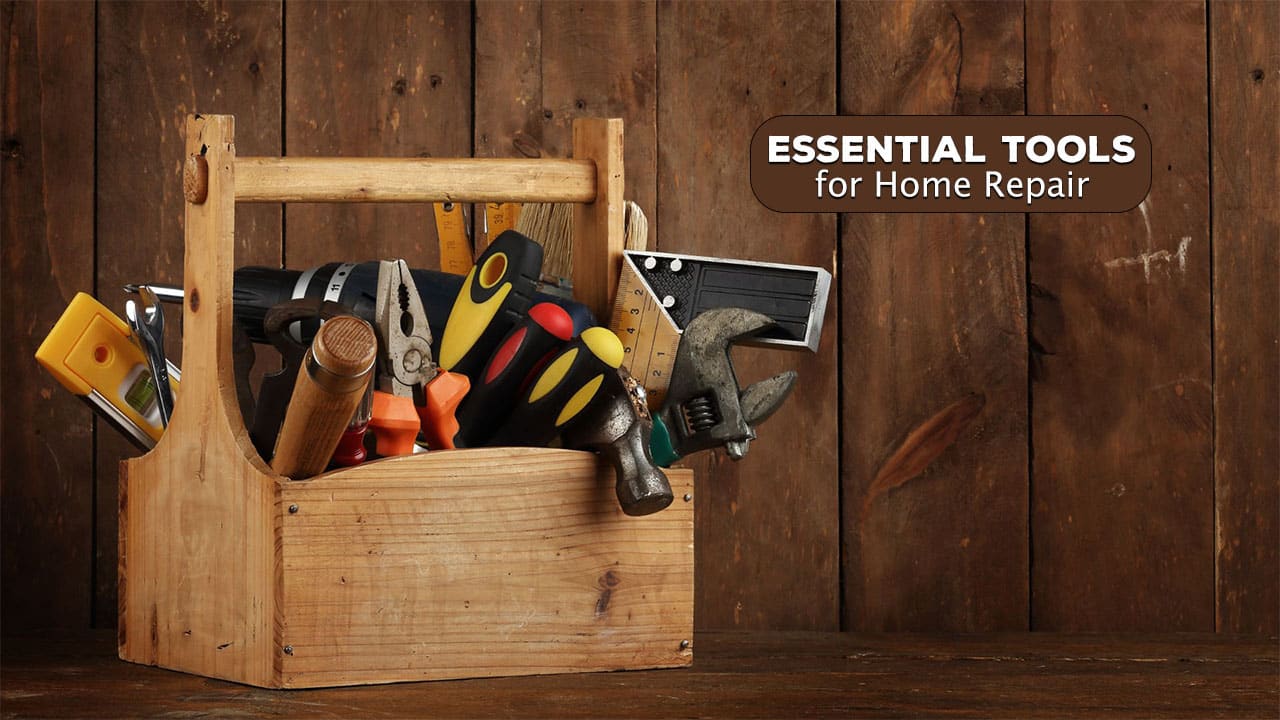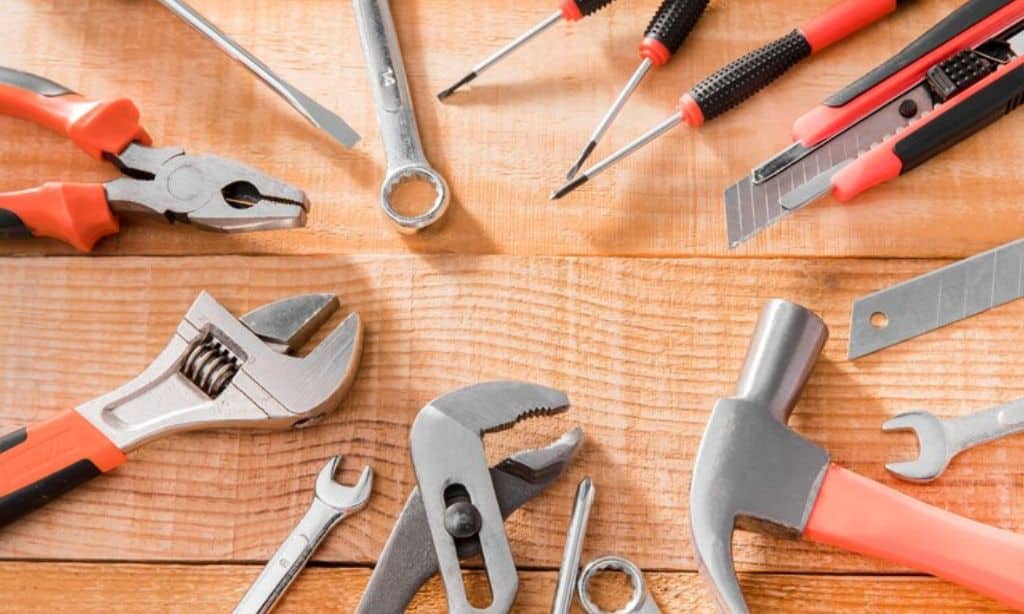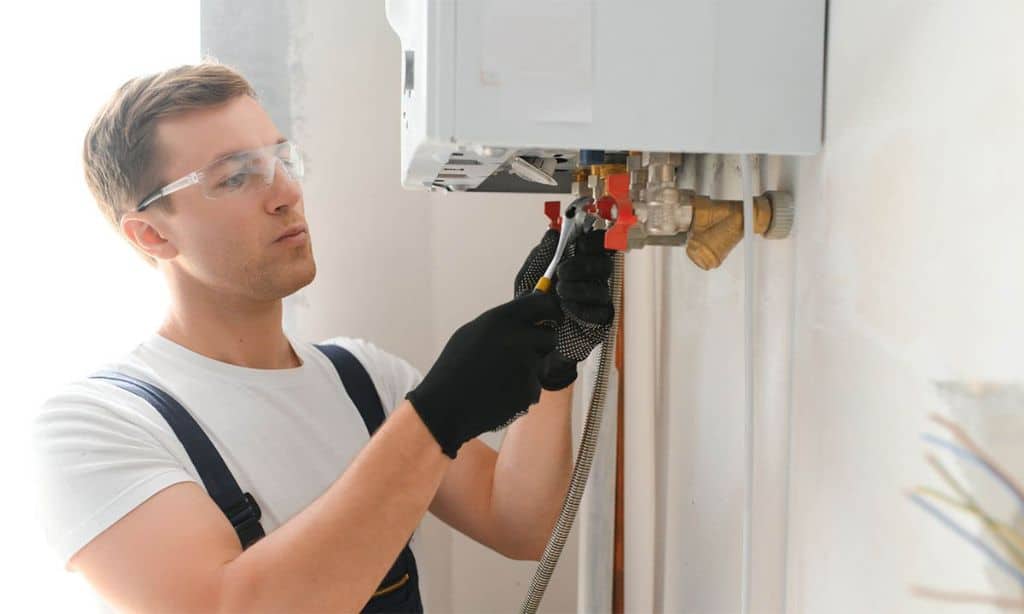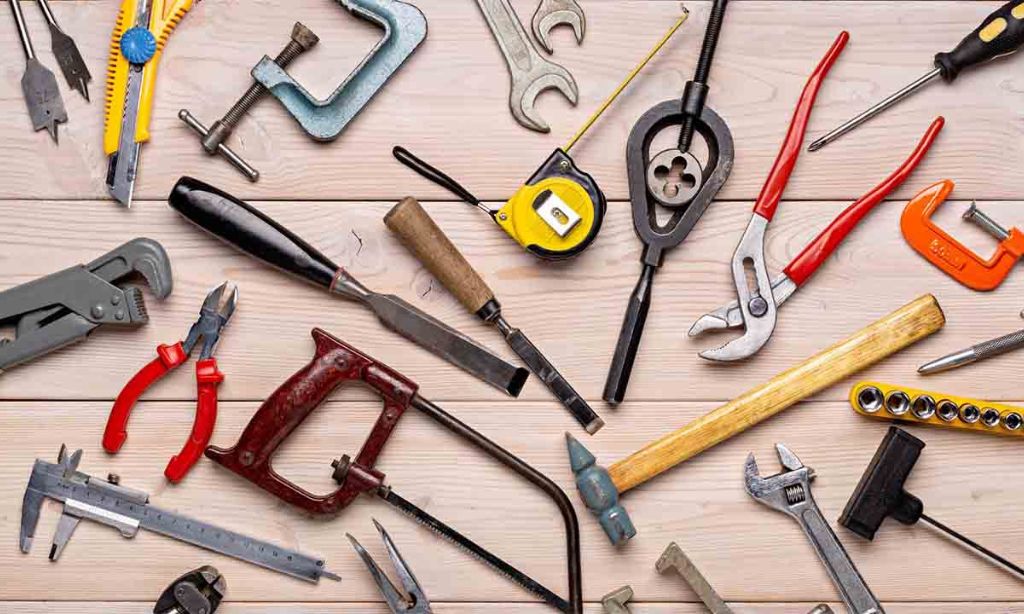In today’s world of homeownership, the ability to tackle basic repairs and maintenance tasks can save you time, money, and frustration. Whether you’re a seasoned DIY enthusiast or a newcomer to the world of home improvement, having the right tools at your disposal is crucial. This comprehensive guide will explore the 12 essential tools every homeowner should have to tackle common home repairs and projects.
From simple fixes like hanging pictures to more complex tasks like repairing leaky faucets, these versatile tools will empower you to take on many home maintenance challenges. We’ll delve into the specifics of each tool, discussing its uses, features to look for when purchasing, and tips for proper care and maintenance.
Let’s dive into the world of home repair and discover the 12 essential tools that will make your DIY journey smoother and more successful.
1. Claw Hammer
The claw hammer is the most iconic and versatile tool in any home repair kit. This indispensable item serves two primary functions: driving nails into various materials and removing them when necessary.
Key Features:
– Weight: Typically ranging from 16 to 20 ounces
– Handle material: Wood, fiberglass, or steel
– Head: Forged steel with a striking face and a claw
Uses:
– Driving nails for hanging pictures, assembling furniture, or basic carpentry
– Removing nails from walls, wood, or other surfaces
– Light demolition work
– Tapping items into place
When choosing a claw hammer, consider the following:
- Weight: A 16-ounce hammer suits most household tasks, while a 20-ounce version offers more driving power for larger projects.
- Handle material: Wood handles provide a traditional feel and absorb shock well, while fiberglass and steel handles offer durability and reduced vibration.
- Grip: Look for a hammer with a comfortable, non-slip grip to ensure safe and efficient use.
Proper care and maintenance:
– Keep the hammer clean and dry to prevent rust
– Store it in a toolbox or hang it on a pegboard to protect the head and handle
– Periodically check the handle for cracks or looseness
A quality claw hammer can last many years, making it a worthwhile investment for homeowners.
2. Screwdriver Set
A comprehensive screwdriver set is essential for tackling many home repair tasks. From tightening loose cabinet handles to assembling furniture, screwdrivers are indispensable tools in any DIY toolkit.
Key Types:
- Flathead (Slotted): For screws with a single slot
- Phillips: For screws with a cross-shaped recess
- Torx: For star-shaped screw heads
- Allen (Hex): For hexagonal socket screws
Features to consider:
– Magnetic tips for easy screw placement
– Comfortable, ergonomic handles for extended use
– Durable, heat-treated steel shafts for longevity
When purchasing a screwdriver set, look for:
– A variety of sizes for each type (small, medium, large)
– A case or organizer for easy storage and transport
– High-quality materials for durability
Uses:
– Assembling and disassembling furniture
– Repairing electronics and appliances
– Installing light switches and outlets
– Tightening loose screws on doors, cabinets, and fixtures
Proper care and maintenance:
– Keep screwdrivers clean and dry to prevent rust
– Store them in their case or a tool organizer to prevent damage
– Avoid using screwdrivers as pry bars or chisels to maintain their integrity
Investing in a good-quality screwdriver set will serve you well for years, making it a worthwhile addition to your home repair toolkit.
3. Adjustable Wrench
An adjustable wrench, also known as a crescent wrench, is a versatile tool that can handle a variety of nuts and bolts of different sizes. This adaptability makes it an essential item for any home repair kit.
Key Features:
– Adjustable jaw that can be widened or narrowed to fit various nut and bolt sizes
– Typically available in sizes ranging from 6 to 12 inches
– Made of durable chrome vanadium steel
Uses:
– Tightening or loosening nuts and bolts
– Plumbing repairs, such as fixing leaky faucets or pipes
– Assembling furniture or exercise equipment
– General mechanical work around the house
When choosing an adjustable wrench, consider:
- Size: An 8-inch wrench is suitable for most household tasks, but having a smaller (6-inch) and larger (10 or 12-inch) option can be helpful for various projects.
- Jaw capacity: Look for a wrench that can open wide enough to accommodate the enormous bolts you anticipate working with.
- Grip: A comfortable, non-slip grip is essential for safe and efficient use.
Proper care and maintenance:
– Keep the wrench clean and lightly oiled to prevent rust and ensure smooth operation
– Store it in a dry place, preferably in a toolbox or on a pegboard
– Avoid using the wrench as a hammer or pry bar, as this can damage the tool
An adjustable wrench is a valuable addition to your toolkit, offering flexibility and convenience for many home repair tasks.
4. Pliers Set
Pliers are crucial for gripping, bending, and cutting various materials during home repair projects. Having multiple types of pliers in your toolkit allows you to tackle a wide range of tasks effectively.
Essential types of pliers:
- Needle-nose pliers: For gripping small objects and reaching into tight spaces
- Slip-joint pliers: Versatile pliers with an adjustable pivot point for handling different sizes
- Locking pliers (Vise-Grips): For securing objects with a robust and hands-free grip
- Channellock pliers: Adjustable pliers with a vast jaw capacity for plumbing tasks
Features to look for:
– Comfortable, ergonomic handles with non-slip grips
– Hardened steel jaws for durability
– Spring-loaded handles for easy one-handed operation (on some models)
Uses:
– Gripping and holding small objects
– Bending wire and thin metal
– Cutting wire or cables
– Tightening or loosening nuts and bolts in tight spaces
– Holding materials steady while working
Proper care and maintenance:
– Keep pliers clean and lightly oiled to prevent rust
– Store them in a dry place, preferably in a toolbox or on a pegboard
– Avoid using pliers on hardened steel or as a substitute for wrenches on nuts and bolts
A well-chosen set of pliers will serve you well in countless home repair scenarios, making them an indispensable part of your DIY toolkit.
5. Utility Knife
A utility knife, a box cutter, or a Stanley knife is a versatile tool essential for precise cutting tasks around the home. Its retractable, replaceable blade makes it ideal for a variety of applications.
Key Features:
– Retractable blade for safety
– Replaceable blades for consistent sharpness
– Durable handle with a comfortable grip
Uses:
– Opening packages and boxes
– Cutting drywall, carpeting, or vinyl flooring
– Trimming excess material (e.g., weatherstripping, caulk)
– Scoring materials before breaking or cutting
– Sharpening pencils in a pinch
When choosing a utility knife, consider:
- Blade storage: Some models store extra blades in the handle for convenience
- Locking mechanism: Ensure the blade locks securely in both extended and retracted positions
- Blade-changing system: Look for a knife with an easy, tool-free blade-changing mechanism
Safety tips:
– Always retract the blade when not in use
– Cut away from your body to avoid injury
– Use a cutting mat or appropriate surface to protect underlying materials
– Dispose of used blades safely in a sharps container or wrapped securely in paper or cardboard
Proper care and maintenance:
– Keep the knife clean and dry
– Replace blades regularly to ensure clean, safe cuts
– Store the knife in a safe place out of reach of children
A high-quality utility knife is an invaluable tool for various home repair and DIY projects, offering precision and versatility in cutting tasks.
6. Tape Measure
A reliable tape measure is indispensable for any home repair or improvement project. It allows you to take accurate measurements, ensuring precision in your work and helping you make informed decisions about materials and placement.
Key Features:
– Retractable steel tape with clear, easy-to-read markings
– Locking mechanism to hold the tape at a specific length
– Durable case with a belt clip for easy carrying
Common lengths:
– 12 feet: Suitable for small household tasks
– 25 feet: Ideal for most home repair and DIY projects
– 100 feet: Useful for larger outdoor projects or construction work
Uses:
– Measuring rooms for furniture placement or renovation planning
– Determining the size of windows for curtains or blinds
– Calculating material needs for flooring, painting, or wallpapering
– Ensuring level placement of pictures or shelves
When choosing a tape measure, consider:
- Readability: Look for clear, contrasting markings for easy reading
- Standout: The distance the tape can extend unsupported, necessary for measuring alone
- Hook design: A multi-catch hook allows for more versatile measuring
Tips for accurate measuring:
– Use the sliding hook at the end correctly for both inside and outside measurements
– Keep the tape measure level and taut for precise readings
– Mark measurement points clearly with a pencil or masking tape
Proper care and maintenance:
– Keep the tape measure clean and dry
– Allow the tape to retract slowly to prevent damage
– Store it in a toolbox or on a pegboard when not in use
A good-quality tape measure will serve you well in countless home repair and improvement projects, making it a crucial addition to your toolkit.
7. Level
A level is essential for ensuring that surfaces and objects are perfectly horizontal or vertical. This simple yet crucial instrument helps achieve professional-looking results in many home repair and improvement projects.
Types of levels:
- Spirit level (bubble level): The most common type, using air bubbles in liquid-filled vials
- Laser level: Projects a straight line onto surfaces, useful for larger projects
- Digital level: Provides precise angle measurements digitally
Key Features:
– Multiple vials for horizontal, vertical, and 45-degree angle measurements
– Durable frame (typically aluminum or plastic)
– Accuracy markings (e.g., how many millimeters of deviation per meter)
Uses:
– Hanging pictures, mirrors, or shelves
– Installing cabinets or countertops
– Laying tile or flooring
– Ensuring doors and windows are properly aligned
– Checking if walls are plumb (perfectly vertical)
When choosing a level, consider:
- Length: Longer levels (24-48 inches) are more accurate but less maneuverable
- Accuracy: Look for levels with high accuracy ratings (e.g., 0.5mm/m or better)
- Durability: Opt for levels with shock-absorbing end caps to protect vials
Tips for using a level:
– Clean the surface before placing the level to ensure accurate readings
– Use multiple points of contact for more precise leveling
– For spirit levels, ensure the bubble is centered between the lines for accurate level
Proper care and maintenance:
– Keep the level clean and dry
– Store it in a safe place to prevent damage to the vials
– Periodically check the level’s accuracy by flipping it end-over-end on a surface
A quality level is invaluable for achieving professional results in many home repair tasks, making it a worthwhile investment for any DIY enthusiast.
8. Cordless Drill
A cordless drill is an essential power tool for many home repair and improvement projects. It combines convenience with power, allowing you to drill holes and drive screws quickly and efficiently.
Key Features:
– Rechargeable battery (typically 12V, 18V, or 20V)
– Variable speed control
– Adjustable clutch for different torque settings
– Keyless chuck for easy bit changes
Uses:
– Drilling holes in wood, drywall, and some metals
– Driving screws for various applications
– Mixing paint or other materials with a paddle attachment
– Sanding with sanding attachments
When choosing a cordless drill, consider:
- Battery life and charging time
- Weight and ergonomics for comfortable use
- Maximum torque for more demanding jobs
- Included accessories (e.g., extra battery, carry case)
Essential accessories:
– A variety of drill bits for different materials
– Screwdriver bits in various sizes and types
– Spare battery for extended use
Safety tips:
– Wear safety glasses to protect your eyes from debris
– Use the appropriate bit for the material you’re working with
– Start with low speed and increase gradually as needed
– Keep your work area clean and well-lit
Proper care and maintenance:
– Clean the drill after each use
– Store batteries in a cool, dry place
– Periodically check and tighten any loose parts
A cordless drill is a game-changer for many home repair tasks, significantly reducing the time and effort required for drilling and driving screws.
9. Putty Knife
A putty knife is a simple yet versatile tool for home repair and painting projects. It’s primarily used for applying and smoothing putty, spackling compound, or other fillers, but its uses extend far beyond that.
Types of putty knives:
- Flexible blade: Ideal for spreading materials and creating smooth finishes
- Stiff blade: Better for scraping and removing old materials
Key Features:
– Blade width (typically ranging from 1 to 6 inches)
– Handle material (wood, plastic, or rubber)
– Blade material (usually carbon steel or stainless steel)
Uses:
– Applying putty, spackle, or wood filler
– Smoothing caulk or adhesives
– Scraping off old paint or wallpaper
– Cleaning tight corners or crevices
– Opening paint cans
When choosing a putty knife, consider:
- Blade width: Wider blades cover more area but offer less precision
- Flexibility: Flexible blades are better for smoothing, while stiff blades are better for scraping
- Handle comfort: Look for an ergonomic design for extended use
Tips for using a putty knife:
– Clean the surface thoroughly before applying any filler
– Apply filler in thin layers, allowing each to dry before adding more
– Use long, smooth strokes for an even application
– Clean the putty knife immediately after use to prevent material from hardening on the blade
Proper care and maintenance:
– Clean the blade thoroughly after each use
– Store in a dry place to prevent rust
– Sharpen the blade occasionally for better performance
A good-quality putty knife is invaluable for achieving smooth, professional-looking finishes in many home repair projects.
10. Staple Gun
A staple gun is handy for quickly and securely fastening materials in various home repair and DIY projects. It’s beneficial for fabrics, light wood, or plastic sheeting tasks.
Types of staple guns:
- Manual: Requires physical force to operate
- Electric: Powered by electricity for faster, easier stapling
- Pneumatic: Uses compressed air for high-volume stapling
Key Features:
– Staple size compatibility
– Adjustable power settings (on some models)
– Safety lock to prevent accidental firing
– Comfortable grip for extended use
Uses:
– Upholstering furniture
– Installing insulation
– Securing fabric to frames (e.g., for screens or artwork)
– Attaching light materials to wood
– Temporary fastening for painting or construction projects
When choosing a staple gun, consider:
- Intended use: Manual guns are suitable for occasional use, while electric or pneumatic models are better for frequent or heavy-duty tasks
- Staple compatibility: Ensure the gun accepts the staple sizes you’ll need
- Ease of loading: Look for models with simple, tool-free staple loading
Safety tips:
– Always wear safety glasses when using a staple gun
– Keep fingers clear of the stapling area
– Use the safety lock when not in use
– Never point the staple gun at yourself or others
Proper care and maintenance:
– Clean the staple gun regularly, especially the staple feed area
– Oil moving parts occasionally to ensure smooth operation
– Store in a dry place to prevent rust
A staple gun is a time-saving tool that can make many home repair tasks quicker and more accessible, especially those involving fabric or light materials.
11. Stud Finder
A stud finder is essential for locating the wooden or metal framing studs behind walls. This knowledge is crucial for securely hanging heavy objects or making structural changes to your home.
Types of stud finders:
- Magnetic: Detects metal fasteners in studs
- Electronic: Uses sensors to detect density changes in the wall
- Advanced electronic: Offers multiple scanning modes and can detect live wires
Key Features:
– Accurate detection of stud edges
– Easy-to-read display or indicator
– Compact and ergonomic design
– Multiple scanning modes (in advanced models)
Uses:
– Locating studs for hanging heavy pictures, mirrors, or shelves
– Finding safe spots to anchor furniture to walls
– Identifying areas to avoid when cutting into walls
– Locating joists in ceilings for hanging light fixtures or ceiling fans
When choosing a stud finder, consider:
- Accuracy: Look for models with good reviews for reliable detection
- Ease of use: Choose a stud finder with clear indicators and simple operation
- Additional features: Some models can detect live wires or differentiate between wood and metal studs
Tips for using a stud finder:
– Calibrate the device on a known empty part of the wall before scanning
– Move the stud finder slowly and steadily across the wall
– Mark both edges of the stud for the most accurate placement
– Always double-check findings with a small nail or drill bit before making large holes
Proper care and maintenance:
– Keep the stud finder clean and dry
– Remove batteries when storing for long periods
– Avoid dropping or exposing the device to extreme temperatures
A good stud finder can save you from costly mistakes and ensure your wall-mounted items are secure, making it a valuable addition to your home repair toolkit.
12. Multimeter
A multimeter is a versatile electrical testing device that measures voltage, current, and resistance. It’s essential for diagnosing electrical problems and ensuring safety when working with electrical systems in your home.
Types of multimeters:
- Analog: Uses a moving needle to display readings
- Digital: Provides precise numerical readings on an LCD screen
Key Features:
– Voltage measurement (AC and DC)
– Current measurement
– Resistance measurement
– Continuity test function
– Auto-ranging capability (in some models)
Uses:
– Testing batteries for charge level
– Checking for live wires before electrical work
– Diagnosing issues with appliances or electronics
– Verifying proper grounding in outlets
– Testing fuses and circuit breakers
When choosing a multimeter, consider:
- Accuracy: Higher-quality multimeters offer more precise readings
- Safety ratings: Look for devices rated for the voltage levels you’ll be working with
- Additional functions: Some multimeters can measure temperature, capacitance, or frequency
Safety tips:
– Always turn off power sources before testing
– Use insulated probes and keep your hands behind the probe barriers
– Never exceed the multimeter’s maximum rated voltage
– Avoid using a multimeter in wet conditions
Proper care and maintenance:
– Store the multimeter in a dry, cool place
– Replace batteries promptly when low
– Regularly check probe wires for wear or damage
– Calibrate the multimeter periodically for accuracy
A multimeter is invaluable for anyone doing electrical work or troubleshooting around the home, providing essential information for safe and effective repairs.
Final thoughts
These 12 essential tools in your home repair kit will equip you to handle many DIY projects and minor repairs around your house. From hanging pictures and assembling furniture to diagnosing electrical issues and making precise measurements, these tools cover the basics of home maintenance and improvement.
Remember, while having the right tools is crucial, using them safely and correctly is equally important. Always read the manufacturer’s instructions, wear appropriate safety gear, and don’t hesitate to call in a professional for tasks beyond your skill level or comfort zone.
Investing in quality tools and maintaining them properly will ensure they serve you well for years. As you gain experience and tackle more complex projects, you may be expanexpandolkit. But with these 12 essentials, you’ll be well-prepared to comfortably handle many everyday home repair tasks confidently







































